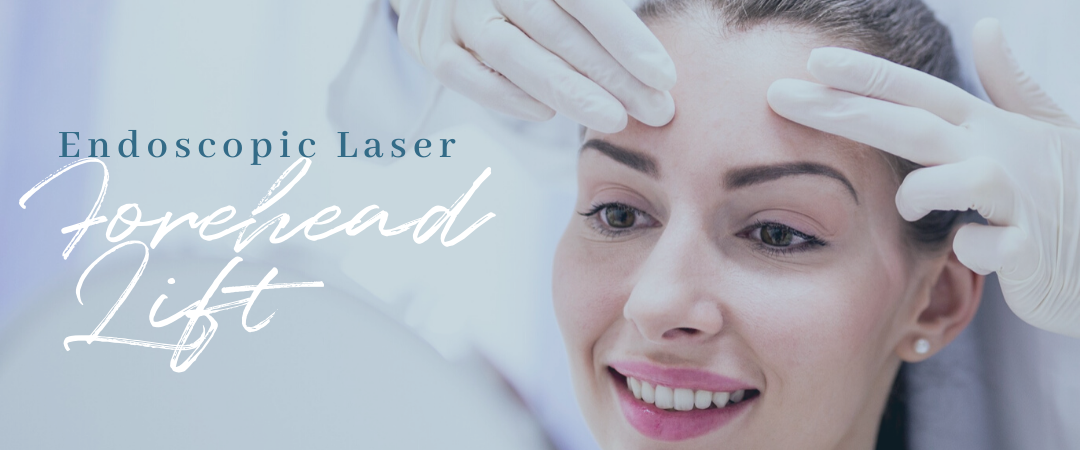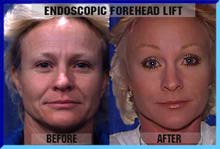
EARLY SIGN OF AGING
Although sagging of the eyebrow and forehead is frequently one of the early signs of aging, it is a condition which can be found in young people who otherwise show no indication of aging. It is often accompanied by a drooping or furrowing of the forehead, as well as the development of horizontal or vertical creases in the forehead.

This can cause the upper lids to bulge and descend until the brow almost seems to lie on the eyelashes. Patients often complain that their eyes appear to be getting smaller or deeper-set and that their mascara or eyeliner usually ends up high on the upper part of the lids a short while after it has been applied. This condition can be greatly benefited by a forehead lift, which can be well thought of as a type of upper facelift. In fact, upper facial sagging is often the first sign of aging. Since patients are now considering facelift surgery at a younger age, it is not surprising that the forehead lift has enjoyed a great surge in popularity.
Forehead lifting used to always involve incisions made across the forehead. Now, with the introduction of endoscopic surgery, combined with the use of a laser, the operation can be carried out through limited small incisions that are inconspicuous. Exceptions are when patients have a very high forehead, making it desirable to lower the hairline somewhat.
ENDOSCOPIC LASER SURGERY
Endoscopic surgery is a technique that uses optical telescopes with video imaging to allow visualization of surgical sites not readily accessible. The laser allows pinpoint accuracy in dissection with minimal bleeding and more rapid healing. The endoscopic forehead lift takes advantage of these principles and permits an upward shifting of the brow and forehead without long incisions.
SURGICAL TECHNIQUE
The operation Dr. Tobin performs is typically carried out through six tiny incisions made above the hairline. Telescopes and instruments are inserted and dissection is carried out with video monitoring. The forehead is freed down to the brow and up to the top of the head. Muscles are released with the laser to minimize frown lines and allow upward rotation of the brow and forehead. After mobilization, tissue is rotated upward and fixed with sutures that raise the forehead and brow. No skin is removed. The lifting is dependent upon a rotation of the forehead and scalp rather than excision.
Although there may be bruising around the eyes, swelling is usually not a great factor, and recovery is often complete within a week.
There have been few complications reported with the operation although the potential for complications obviously cannot be entirely eliminated. Possible problems include damage to one of the fine motor nerves that control movement of the forehead. This is unusual, and fortunately, when it occurs, generally resolves although resolution can take months in extreme cases. Rarely, sutures used for fixation may get infected requiring removal.
Dr. Tobin’s experience with the endoscopic forehead lift has been positive. He has used it both as an isolated procedure and also in conjunction with traditional facelifting surgery. While the results are not as dramatic as those seen with the extended subperiosteal coronal lift (discussed later) , we do feel that they are almost equal to the open techniques of forehead, brow or coronal lifts. Often patients undergoing this treatment will receive Botox® injections before surgery to help prevent post operative movement of the forehead.
In patients who are also undergoing traditional facelift surgery, the incisions can be modified to allow endoscopic forehead lifting to be incorporated with the facelift.
It should be noted that the forehead lift is not a substitute for the blepharoplasty (eyelid) operation. It will not remove the excess skin or pouching caused by bulging fat in the upper or lower eyelids.
These problems are corrected by a blepharoplasty, which can be combined with the forehead lift. Blepharoplasty is reviewed in a separate section.

